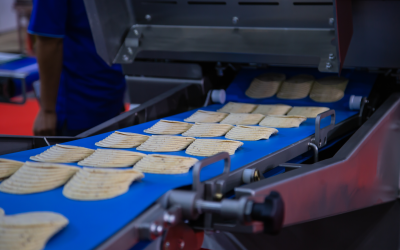Interagency Food Safety Analytics Collaboration (IFSAC), using CDC, FDA, and USDA data from 1998 to 2012, identified vegetable row crops (such as leafy greens) as major causes of E. coli O157: H7 outbreaks; seeded vegetables (such as tomatoes) and fruits as primary causes of Salmonella spp. outbreaks; and fruits as the major cause of Listeria monocytogenes outbreaks.1 IFSAC reported that seeded vegetables were associated with 10% of outbreaks during 2009-2015.2 In the last few years, IFSAC results show that E. coli O157: H7 outbreaks were most often linked to leafy greens and beef, while Listeria monocytogenes outbreaks were most commonly linked to dairy products and fruits.3 There was an increase in attribution of Listeria monocytogenes illnesses to vegetable row crops (from 3.4% in 2013, to 12.5% in 2016) due to the impact of a large multistate outbreak in 2015 linked to prepackaged lettuce.3
The most prevalent pathogen in 2017 recalls was Listeria monocytogenes (among other foods, in fruits and vegetables).4 CDC reported 24 multistate outbreaks in 2018, more than any other year since 2006 and triple the number in 2016.5 Experts agree that the rise is due to better detection (surveillance, whole genome sequences, linked databases) not increased incidence or prevalence.6 Increased investigations linked to foods ranging from romaine lettuce to melons doesn’t mean that US food is “less safe”.5
A key tool in the fight against foodborne illness–Whole Genome Sequencing (WGS)–is used to map the DNA of a pathogen. WGS can identify the genetic sequence of pathogens with such precision that we can distinguish between strains of a bacterium. Prior to WGS, polymerase chain reaction (PCR) and pulse-field electrophoresis (PFGE) were used to genotype microorganisms.7 Regulatory laboratories have shifted from PFGE-based surveillance systems to WGS-based surveillance and outbreak detection.8 Replacement of PFGE with WGS for Salmonella enterica in Canada has already led to an eight-fold increased detection of salmonellosis clusters.9
The WGS technology is helping officials tie together illnesses that once would have appeared distinct, and better identify food products–and food-makers–responsible for the spread of the disease.9 The CDC began using WGS in 2013, plotting the DNA of every Listeria monocytogenes sample tied to a human clinical illness in the USA; that resulted in detection of more listeriosis outbreaks.5 CDC expects a similar bump in E. coli O157: H7, non-O157 STECs, and Salmonella spp. outbreaks as more of these samples are tested via WGS.5
Improved traceability, so we know–geographically–where produce was grown will allow consumers to avoid contaminated products, and origin-labeling will facilitate narrower withdrawals and recalls but it will not tell us the cause of contamination.15 WGS has helped officials connect illnesses that may previously have appeared separate. Two outbreaks tied to romaine lettuce were found to be caused by the same strain of bacteria involved in previous years’ outbreaks–indicating that pathogens are persisting on farms, and in factories or processing plants.5
The extent to which WGS will truly mitigate foodborne illnesses remains to be seen. But, improvements in WGS and genetic testing are not substitutes for traceability.7 For example, WGS linked the strain of E. coli O157: H7 that–in 2018, sickened 210 people and killed 5 people in 36 states–to lettuce from the Yuma, Arizona area, but the bacterium was never actually found on lettuce in the fields or in commerce. Only after the outbreak was declared over, did FDA announce that canal water used for irrigation appeared to be the contamination source. 7, 10 FDA announced that it was exploring a “potential link” between the outbreak and a large Concentrated Animal Feeding Operation (CAFO) and, shortly thereafter, the Leafy Greens Marketing Agreement task force of Western Growers Association extended the “buffer zone” between a CAFO and a growing field from 400 feet, to 1,200 feet.11, 12
In the period of May 20 to July 21, 2018, 507 people fell ill and 24 were hospitalized from cyclosporiasis (caused by a parasite–Cyclospora cayetanensis). The CDC linked the illnesses to a salad mix of romaine lettuce and carrots sold at McDonald’s restaurants in 16 states. McDonald’s recalled the salad mix from more than 3,000 of its stores.13 Nothing further has been reported by governmental Agencies.
The latest multistate outbreak of E. coli O157: H7 occurred in late 2018. In November, FDA announced a “purge” such that all romaine lettuce should be discarded regardless of its origin; later, FDA allowed sale of romaine lettuce from all geographic areas except six counties in California.14, 22 Since then, the FDA limited the recall to one grower (Adams Brothers Farming), one county (Santa Barbara), and to those products (red leaf lettuce, green leaf lettuce, cauliflower) from the geographic area where the produce was grown using irrigation water from the above-ground water reservoir that has been found to be contaminated with the outbreak strain of E. coli O157: H7.14, 15, 16, 22 The outbreak consisted of 62 cases in the US and 29 cases in Canada.22 In the meantime, the leafy greens industry agreed to voluntarily include the location and harvest dates on packaging to improve product traceability.22
Irrigation water or product-washing water, perhaps contaminated with E. coli O157: H7 from cattle feces, or contamination by water containing Cyclospora or Cryptosporium by flooding from storms, have been implicated in fresh produce outbreaks.6 A Romaine Task Force is pushing ahead for a preliminary report by the end of February on provenance labeling, prevention/science, traceability, and investigation improvement.23 Jennifer McEntire (United Fresh Produce Association) says, “Research needs to address how pathogens are transferred in the environment.”23 The Center for Produce Safety, in Woodland, California, is sponsoring a $500,000 challenge, seeking answers to cross-contamination issues in produce-growing areas.24 CPS wants “to develop ways to identify evidence of chronic or acute transfer factors from a domesticated animal point source.”24
By far the biggest problem is that people are eating much more fresh produce: this risk is due to the fact that fresh produce is sold and prepared without any “kill step,” such as cooking or canning to destroy illness-causing germs.6 Few understand this better than Chipotle™; their food safety woes began in 2015 when two E. coli outbreaks sickened 60 people in 14 states. Later that year, they had Norovirus and Salmonella outbreaks; and, in 2018, they suffered Norovirus and Clostridium perfringens outbreaks. Chipotle’s problems are exacerbated by the fact that so much of their food is served raw.17
Results of a Charleston Orwig survey found that: (a) 27% of consumers “do not trust the food industry’s vigilance of efforts to make food safe, and (b) 78% of consumers say that “cooking a food in their own kitchen” is the best way to ensure it is safe to eat.18
Some food manufacturers are stepping up microbiological testing, using the data to identify problems early, plotting positive samples and “hot spots” of supply-chain contamination, and boosting their ability to track products.5 Individual food companies have adopted a “Best Practices/Continuous Improvement” philosophy to go along with GAP, PCHF, HACCP, GFSI, and/or FSVP.6 Chipotle now uses process control, sous vide cooking, antimicrobial rinses, high pressure processing, blanching, air purification, updated sanitation, in-store HACCP, and worker oversight to deal with pathogenic bacteria, parasites, and viruses.19
Tom Karst (Editor of The Packer) said “If 2019 is anything like 2018, the fresh produce industry must focus on keeping consumer confidence by translating food safety research to farm-level practices to stop persistent foodborne illness outbreaks”.20 Tim York (The Packer) said, “These recent food safety outbreaks demonstrate that we can no longer deny the existence of Listeria, E. coli, Salmonella, and/or Cyclospora in our fields, on our machinery, or in our facilities. We need to consider evaluating our food safety practices, joining and following policies of the California Leafy Greens Marketing Association program, and following a zero-tolerance policy on practices that put consumers and our industry at risk.”21
Conclusion: Perhaps humans were not intended to eat raw plant or animal foods. Maybe we’re supposed to consume only things that have been decontaminated. We pasteurize milk; we cook meat and eggs. Even so, we extensively perform microbiological testing of food from animals and of the water, equipment, and facilities with which they come into contact–throughout the supply-chains–to lessen the chance that contaminants slip through the net. Perhaps microbiological testing could help us see if any of the potential solutions mentioned above actually work for fresh produce.
REFERENCES:
1. Gabbett, Rita. 2015. Government report outlines new approach to attributing foodborne illness. Meatingplace. February Edition.
2. McCarthy, Ryan. 2018. CDC releases latest US foodborne illness outbreak data. Meat + Poultry. July 31 Issue.
3. Keefe, Lisa. 2018. New report details sources of foodborne illnesses. Meatingplace. November 12 Issue.
4. Stevens, Shawn. 2018. 2017 Recalls–wow, what a year. Meatingplace. January 8 Issue.
5. Dow-Jones Factiva. 2018. Probes of foodborne illness outbreaks multiply as technology improves. Foodmarket.com. Accessed 12/18/18.
6. Scutti, Susan. 2018. Foodborne illness may be on the rise. Here’s why. CNN. July 20 Issue.
7. Agres, Ted. 2018. Food genomics goes global. Food Safety & Quality. September Edition.
8. Moura et al. 2017. Real-time whole-genome sequencing for surveillance of Listeria monocytogenes. Emerging Infectious Diseases 23 (9): 1462-1470.
9. Nightingale, Kendra. 2018. Advancing food quality and food safety through omics tools. FSNS Quarterly Newsletter. Fall Edition.
10. Karst, Tom. 2018. FDA links Yuma E. coli strain to canal water. The Packer. June 28 Issue.
11. Crampton, Liz. 2018. FDA points to CAFO in wake of E. coli lettuce outbreak Politico. August 7 Issue.
12. Brandt, Alex. 2018. Remarks concerning the meeting on romaine lettuce and CAFO buffer zones. Food Safety Net Services. September 14 notes.
13. Goldschmidt, Debra. 2018. More than 500 sick from outbreak linked to McDonald’s salads. Dow-Jones Factiva, Foodmarket.com. Accessed 8/24/18.
14. Karst, Tom. 2018. FDA updates E. coli foodborne illness investigation. December 18 Issue.
15. Nickle, Ashley. 2018. FDA finds E. coli in irrigation reservoir, narrows romaine advisory. The Packer. December 13 Issue.
16. Karst, Tom. 2018. FDA tightens focus on E. coli investigations. The Packer. December 20 Issue.
17. Bomey and Meyer. 2018. Chipotle to retrain all workers on food safety after hundreds fall ill in Ohio. USA Today. August 17 Issue.
18. Karst, Tom. 2018. Many consumers don’t trust food safety efforts. The Packer. October 10 Issue.
19. Crews, Joel. 2017. Chipotle’s food safety overhaul. Meat + Poultry. April Edition.
20. Karst, Tom. 2018. 2019: Another year of challenges, optimism for fresh produce industry. December 18 Issue.
21. York, Tim. 2018. Industry can no longer deny food safety vulnerability. The Packer. December 21 Issue.
22. Koger, Chris. 2019. E. coli outbreak over, but not the investigation into romaine. The Packer. January 9 Issue.
23. Karst, Tom. 2019. Romaine group pushes ahead despite government shutdown. The Packer. January 17 Issue.
24. Koger, Chris. 2019. CPS challenge offers $500K to target cause of outbreaks. The Packer. January 16 Issue.



